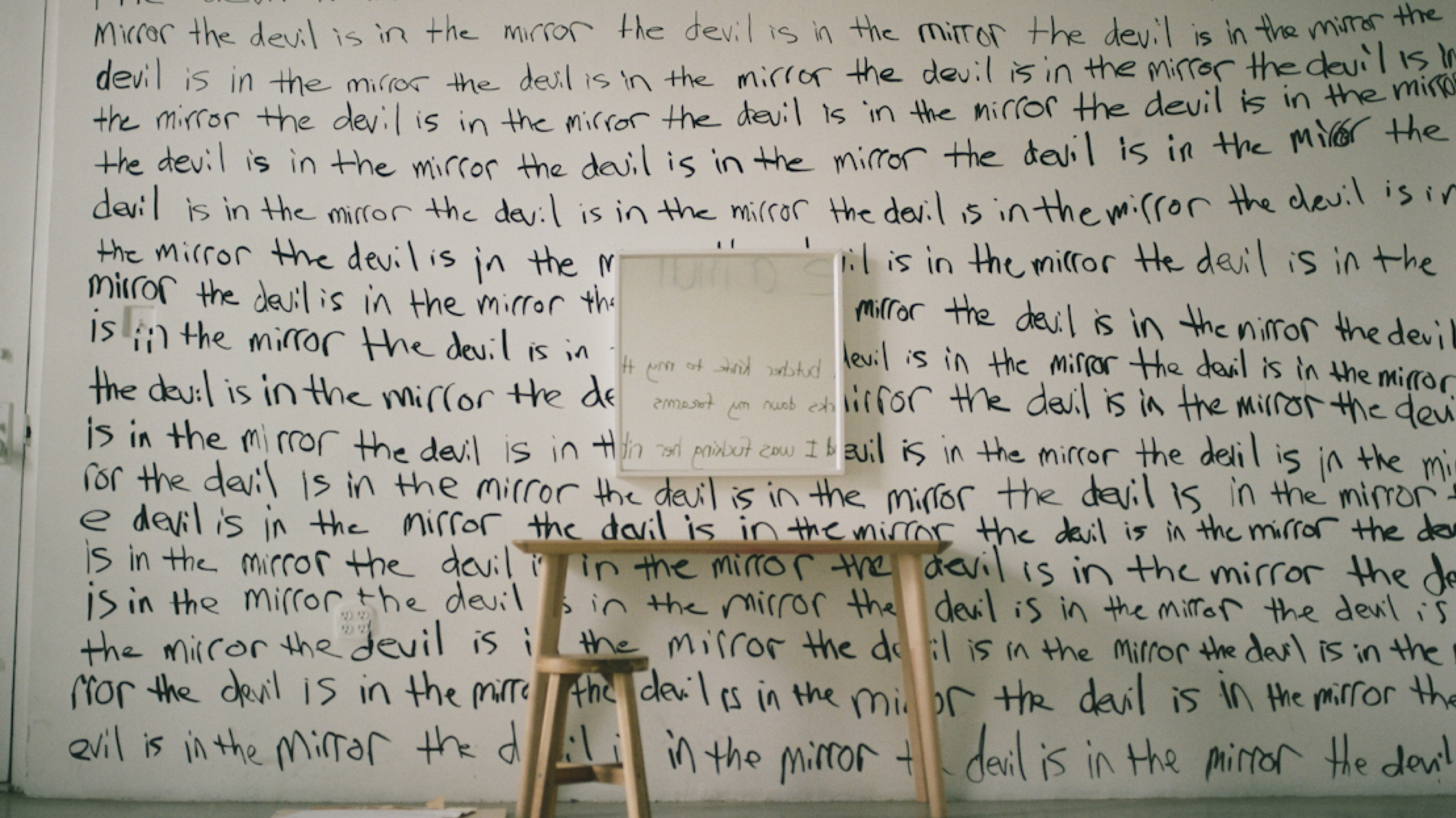
It’s 1998 and Aaron Harvey is a 17-year-old college student at the University of Florida. He’s sitting in a cramped dorm room with a group of friends, passing around a joint and a few Nintendo controllers. Suddenly, a thought rushes into his head: I’m in love with my girlfriend’s brother.
Shocked, he gathers his things, heads out the door and hops into his car. He doesn’t have a set destination, as long as he’s away from that thought and the moment it caught him in. On the road, by himself, he can calm down and reset.
Since childhood, Aaron’s been plagued by a near constant stream of graphic thoughts and images. They flash across his mind thousands of times a day, interrupting daily tasks and triggering severe anxiety. Lately, they’ve centered around two themes — pedophilia and his sexuality.
It’ll be another 15 years until Aaron gets help for these ruminations, which by that time, will be known as “intrusive thoughts.” During those years, he experiences tremendous highs and lows. He gets married, moves to New York City and starts his own business. He also battles an undiagnosed and worsening mental illness. One that forces him to question who he is, what he believes in and why he’s on this earth. It eventually drives him down a dangerous path of self-harm and suicidal ideation.
In 2013, after a lifetime spent suffering in silence, he plugged “violent thoughts” into Google and stumbled upon an article by London-writer, Rose Cartwright. In vivid detail, she described what he’d been going through. The flashing, vulgar images. The panic attacks. The secrecy. The urge to end it all. She gave it a name: Pure OCD. For the first time in his life, he realized he might not be insane.
The road to recovery was not without bumps. Aaron had to navigate doctors offices, healthcare plans, misdiagnoses and medications. Therapy was challenging and forced him to come to terms with aspects of himself he’d grown used to suppressing. However, he slowly started to regain his ground, and eventually reached a point in which he no longer felt controlled by his OCD. With this newfound balance, came a realization — he wanted to give back.
In 2016, he launched IntrusiveThoughts.org as an educational hub for the OCD community. It was filled with the information he wish he’d had in adolescence — articles, YouTube videos, scientific research explained in ways that made sense. “A soft landing,” he called it. Somewhere people like himself could go to feel understood and supported.
The website took off. In two years, it reached hundreds of thousands of people in over 200 countries. Its success inspired Aaron to look beyond the OCD community, and into the broader realm of mental health advocacy. What needs existed there? And how could he use his skills to address them?
In October of 2018, Made of Millions launched as the answer to those questions. Now, Aaron has focused his efforts on scaling the platform and sparking change amongst a younger generation of sufferers. Cofounder, Lauren O’Shaughnessy, spoke with him about his advocacy, the role OCD has played in his life and his opinions on the state of mental health care.
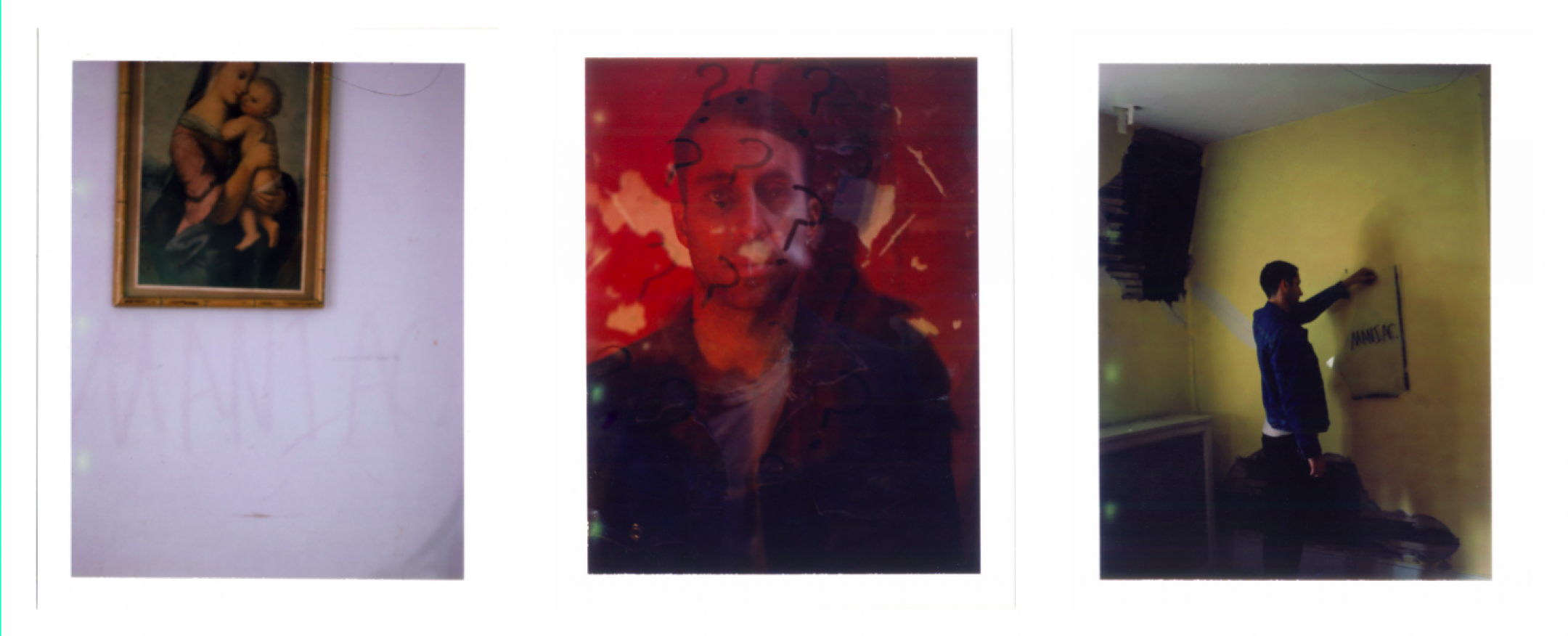
Your OCD symptoms started in childhood but were not seriously addressed for two decades. What is your first memory of OCD and how greatly did it impact your upbringing?
My first memory has been changing recently as I’ve recognized new obsessions and compulsions from over the years. When I was 13, I remember having a thought about harming a naked child, followed by a panic attack that I might be a pedophile. That was the first dramatic event. But as I’ve progressed through treatment and acceptance, I can date things back to being 12 years old and experiencing religious obsessions about having sex with Jesus. I’d repeat prayers over and over to get rid of the thought, but it would never happen and I’d eventually fall asleep. Going back even further, I remember being 8 or 9 years old and having a voice in my head that told me I was gay. I was too young to even know what that meant, but I remember it giving me anxiety.
More and more of these instances are coming to light. I had tons of incestuous thoughts when I was 12 about my grandma. I remember thinking it was really weird and wrong, but then maybe thinking I should just lean into it. It was a fucking war zone.
I’ve heard you talk at length about your memories from early adolescence but then the story jumps to your late-20s. I don’t know much about your anxiety during high school and college.
I think it’s because the pedophilia obsession and the gay obsession were so strong for six years — maybe even through the beginning of college — that it was really hard to move past those. It started around this idea of pedophilia, which I was barely familiar with at the time. Later on, it focused more on my sexuality. I felt like I was straight. I was attracted to women. I wasn’t attracted to men. But my brain kept telling me I was gay, so I was constantly trying to figure that out. It got to the point where I was practicing how to come out to my family.
In early high school, I remember going to communion and there would be a line that said “you should never take communion with unclean hands.” The whole time I was trying not to have intrusive thoughts. I would end up thinking about something awful like desecrating Jesus. In reality, the religious, pedophilia and sexuality-based intrusive thoughts and obsessions lasted from when I was around 8, up until my early-20s as my predominant obsessions came into fruition.
I was there but I wasn’t really there. I was obsessed with religion, sexual identity, whether I was with the right partner. Endless comparisons and an inability to act or move on any of them. That’s when I started to get depressed. You think you’re capable of harming children, being attracted to family members, all this crazy shit. I was spending all this time in my head, and then I’d get really depressed. Like Jesus Christ what the fuck am I doing. I must be a bad person.
And during that entire time, you never shared these thoughts with family, friends or partners?
Never. Not a single person. I’d write about religion and existential crises and the meaning of life and try to figure that stuff out. I’d fill notebooks with psychotic rambling about what is real and what isn’t. And then I’d shred them and throw them away. That was pretty much the extent of it.
I was really struggling in school. I had side effects of OCD, like trouble reading a book or studying or paying attention in class. It was very hard to do anything when your brain is so distracted all the time.
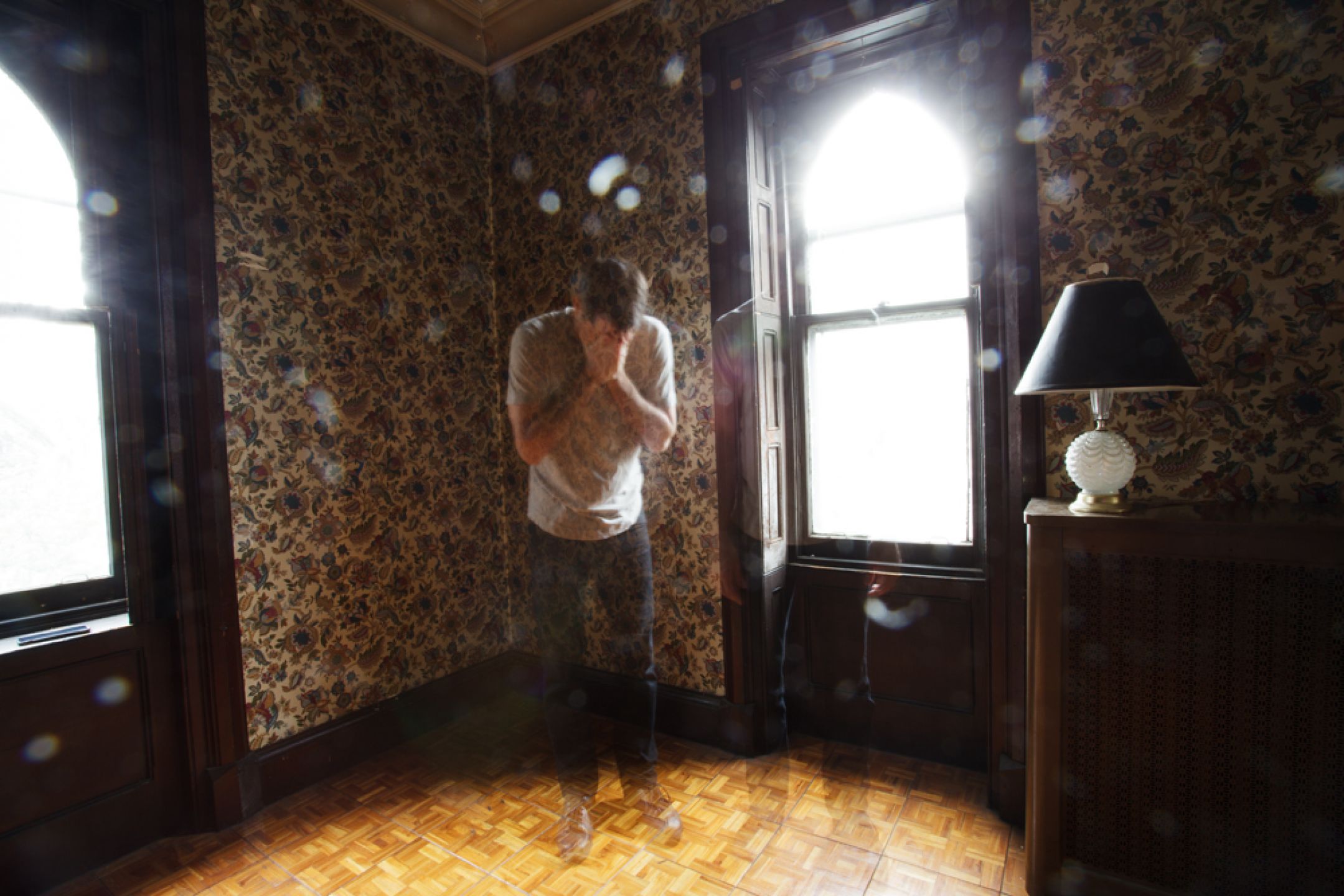
Did you think about how you’d go about sharing these thoughts with others, or was that completely off limits?
I definitely thought about the consequences. If I shared my thoughts about raping a kid or the ones about my grandma, maybe I’d go to jail, maybe I’d be put on some record, maybe it would keep me from having a family one day. There’s so many maybes and you don’t know the system. You’re just a kid.
For a lot of people with OCD, when you do something like hold a baby, you have the sensation of throwing it or dropping it. It’s almost like you lose control of your arms. And in that moment, you really feel like what you were worried about almost happened. What I’d accepted at that time, was that I was a borderline psychopath. I was one action away from doing something horrible and it was all about keeping it together so that I didn’t reach that point.
If you weren’t sharing your pain with others and didn’t have any plans to, how did you learn to cope?
On the extreme side, there was an acceptance that if my thoughts got worse, I’d kill myself. I’d have a responsibility to society, to remove myself as a potential threat to other people. I think that speaks to the character of many people with OCD. They’re so concerned about the possibility of doing something wrong, that they might harm themselves or take their life to protect those around them. It’s ironic.
Beyond that acceptance, I found that marijuana was amazing for me and really chilled me out. Surfing. Playing guitar. Playing basketball. Anything that made me present really helped.
Do you think your dedication to these hobbies was driven by a need to control your OCD?
I’d say yes. For instance, sitting down and playing the guitar is a very therapeutic and personal experience. As I started to learn how to do that around 11 years old, it became a safe space for me to express myself and be in my own little world.
Surfing was just something I thought was beautiful. I’d always loved the water and found it very therapeutic. When I really started to lose it about five years ago, I turned to surfing and I’ve been surfing like crazy since then. When you put yourself in the ocean like that, you’re surrendering to it. That’s big for someone with OCD, because you’re normally refusing to surrender to anything and constantly fighting your thoughts. You have to accept the ocean and where you are and the potential dangers and the beauty of it and the dopamine rush. It’s one big package. If I had to give up everything, the only thing I would not give up is surfing.
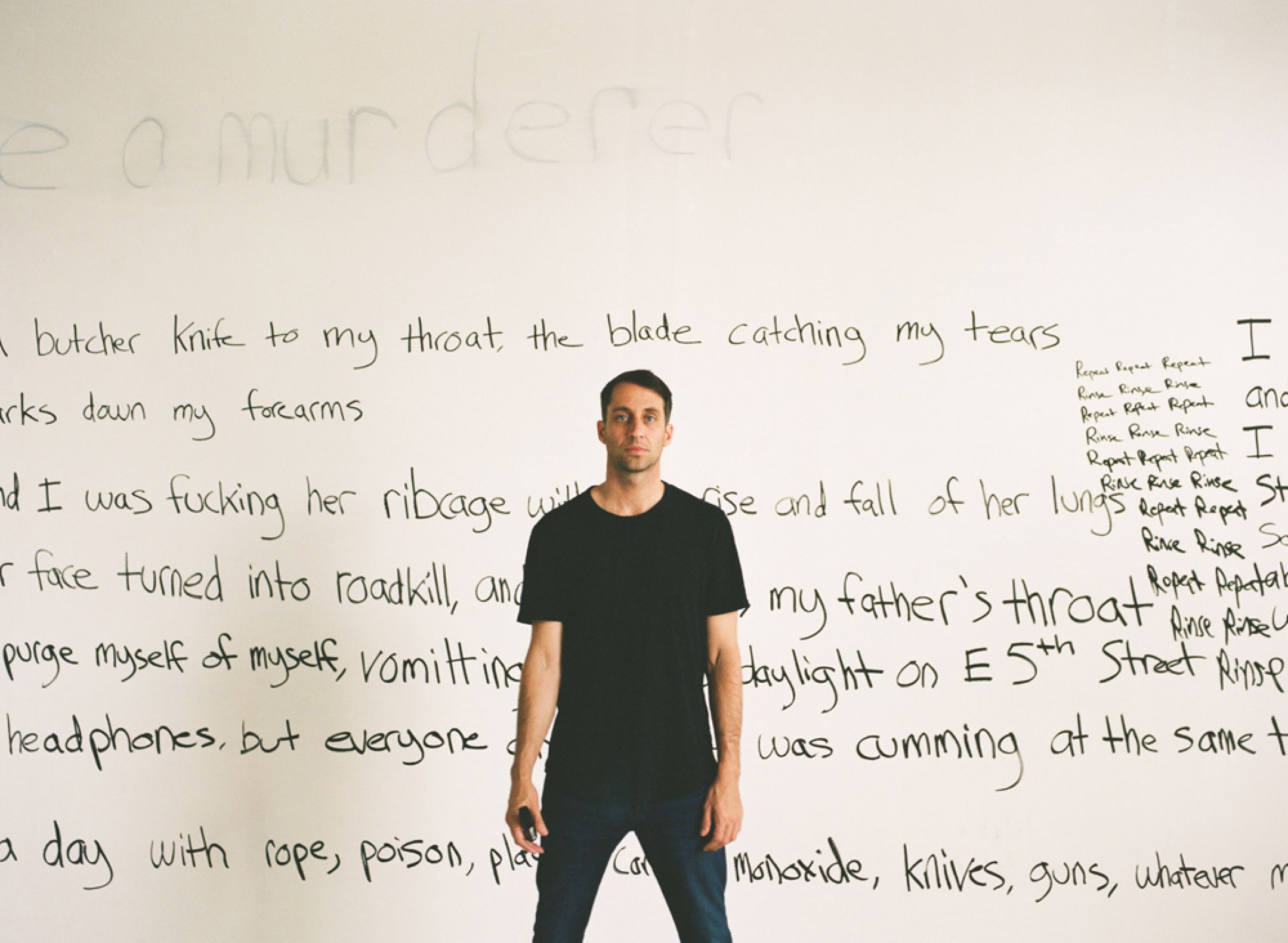
By the time you left Florida, moved to New York and started your business, what was the state of your mental health? How was it affecting your relationship and your ability to be an entrepreneur?
I moved when I was 28. My MO leading up to that point, had been not slowing down. I’d do a thousand things at once to stay out of my head. Moving to New York was just one more thing that I could do to consume mental space and energy.
In some way that’s good, in some ways it’s covering up a lot of symptomology. At that point, I had been dealing with violent intrusive thoughts for over six years. I had awful thoughts about harming my ex-wife — murdering her, killing her, raping her. All kinds of horrible things. She became, in a way, a contaminated object. As fucked up as that sounds. She represented a source of anxiety for me, both in terms of violence, and in terms of having a child. That might have been something we both wanted, but it also triggered my intrusive thoughts. I was afraid to have a kid because I was afraid I might harm it. I was afraid to start a family because I was afraid of creating a psychopath. A real thought I had was that I’m a borderline psychopath and don’t need to put another human in the world that might be fully insane.
By the time I got to New York, the business became a really huge escape for all of that. I was able to buckle down and work on building something with a friend and experiencing all these new opportunities.
You’ve mentioned before that this time period came with extreme highs and lows. During the day, you were living a fast-paced life as the co-founder of a successful company. But at night, you’d retreat into your brain and this dangerous world of self-harm and rumination. What was that like?
The secret was getting too big for me to handle. At this point I was probably 32 or 33, and I’d never talked to anyone about it.
With OCD, there’s often multiple themes happening at once. I might go from having a pedophilia thought to an incestuous thought to a violent thought in the span of a few seconds. That intensity can become very overwhelming. A business can be an amazing escape for that. But I found myself living in this total paradox. In the office I had to be the funny, lighthearted guy. On the flip side, I was living a very dangerous life inside my mind. A big turning point for me was when my violent thoughts started to attack myself. That got really confusing. Here I am running a successful business but I’m really depressed. I can’t figure out my brain. I have no idea what my purpose is on this earth. I have absolutely no grounding or personal meaning apart from this business that’s doing well. I felt like I was two different people, which became extremely hard to deal with.
When your mind starts attacking itself to the point where you’re seeing thousands of flashes a day about killing yourself in different ways – it really feels like your brain is saying you have to die. Because it is. It’s telling you to die, to kill yourself. You have this willpower saying that you don’t actually want to die, but your brain is saying the opposite. I would go from the boardroom to going out and getting wasted to hurting myself and then waking up at 8am to do it all over again. It was a very isolating and dark time.
Did your OCD manifest differently once your career took off? Did the workplace come with different kinds of obsessions?
I wouldn’t say it came with new obsessions since I was experiencing the gamut of them. But it presented them in new ways. One time I was talking on a panel in front of a few hundred people and the moderator asked me a question and I had no idea what he said because I’d pictured taking a razor blade and mutilating his face with it. I was so taken aback by the image, that I didn’t know how to answer the question. There was this long, awkward pause.
I had to learn how to handle that. This shit happens to me in meetings, with clients, on panels, everywhere. My brain will present terrible things that throw me off course. So I had to find ways to cope in real time and learn little mechanisms - like phrases I might say or something to help transition - because I had no idea what I’m talking about. Things I had to learn to do to cope with these thoughts in a professional work environment.
The primary tool was reminding myself that I’m in these rooms for a reason. If I lose my train of thought or have to ask someone to repeat something, I’m just going to lean into that all the way and it’ll be a part of my character. Clients and friends will know that about me, and it is what it is.
Prior to launching IntrusiveThoughts.org, you opened up to your team about your OCD and what was to come. What went into that decision and how did it change your relationship with coworkers?
When I go into beast mode – which I did for a few months to get IntrusiveThoughts.org off the ground – it’s pure work. I compartmentalize myself out of whatever’s happening. How I feel, what my experience is, the fact that I’m about to put it on display for the world. I can just set that in a box on the side and get in the zone and build a business and launch something.
A week before the Fast Company article was set to come out, I thought - man, I really need to address this because I’m talking about having all these graphic thoughts. If I don’t tell my partners, my business, and a few immediate family and friends, this is going to catch them off guard. I need to hedge how crazy they think I am by explaining it.
One of the hardest things I’ve ever done is tell my team. I was afraid that maybe they wouldn’t want to work with me anymore. They wouldn’t feel comfortable being in the office with me at night. Telling them was really hard. I got choked up, and I think people realized it was getting serious while I was explaining it. It was tough. I had to do it though. I couldn’t have an article with such graphic descriptions out there without have a conversation first.
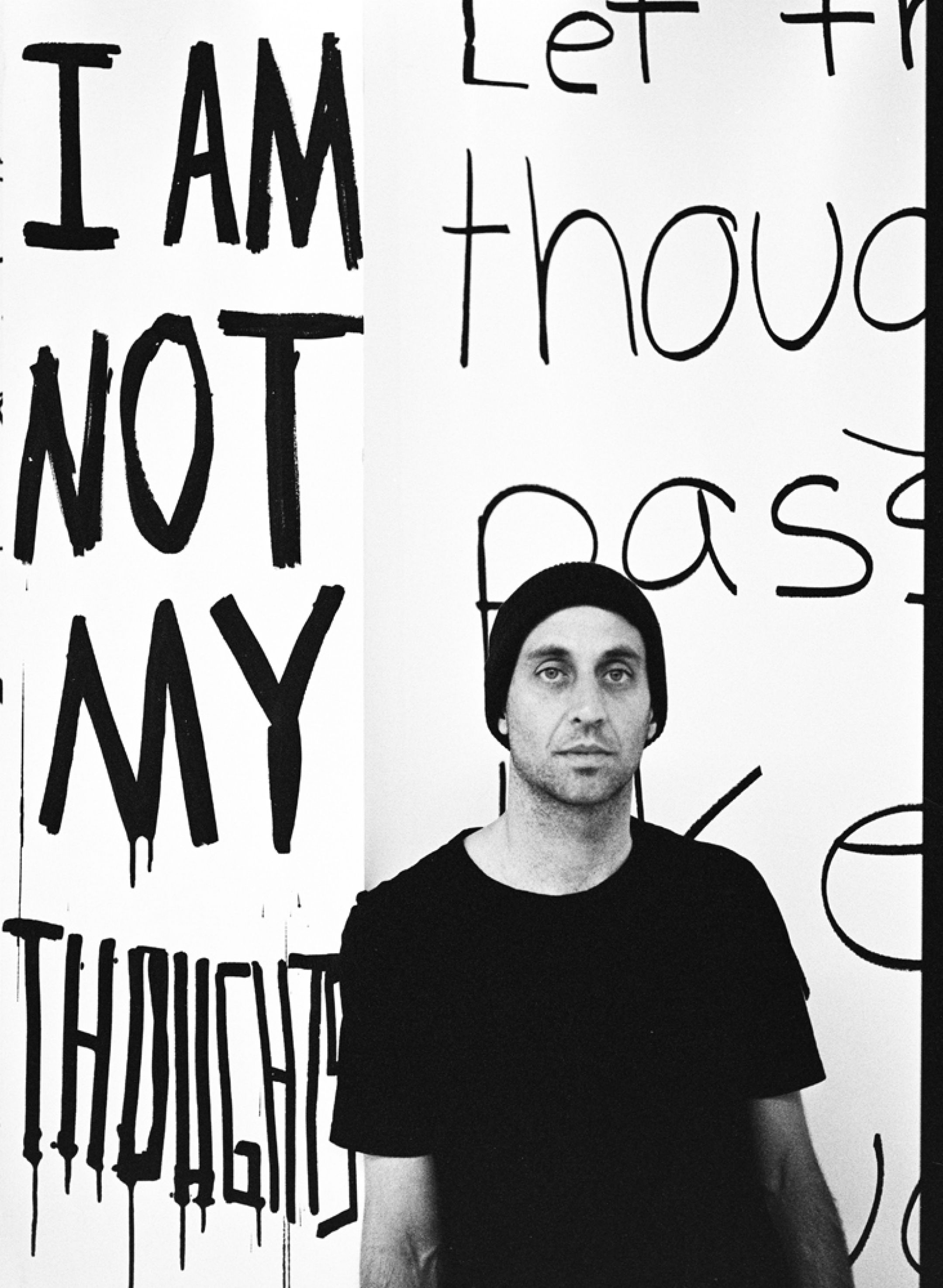
In the vein of workplace transparency and advocacy, what level of candor and openness do you think employers owe their companies?
I think it’s a tremendously personal question but I recommend that people stop faking it.
Get real. It doesn’t mean you have to say what your specific symptoms are, but acknowledge that you experience one thing or another, or that your family and friends do - which we all know is true. There is value in leadership being vulnerable and that’s probably the biggest thing that I’ve learned through this experience. What I was afraid would be seen as a weakness, ends up being seen as a strength by employees and clients. It does come with risk and it does come with the idea that you have to just say fuck it, I’m going to be true to myself and I’m going to explain it this way and that’s it. You have to accept the fact that there will be gossip and people hating and marginalizing and not understanding. But whatever. That’s on them.
I think it’s incumbent upon business leaders whether they’re culture makers or influencers or corporate CEOs, to get real with the conversation.
Has there been overlap between the company and your advocacy? In what ways has your marketing knowledge impacted the IntrusiveThoughts.org and Made of Millions platforms?
When you have a need and you go to research it, there’s a certain journey that you go on. I look back to prior to launching IntrusiveThoughts.org and what that journey was like for me. 20 plus years of silence and then an intense realization, which was followed by deep research — going through Wikipedia message forums, finding resources, watching videos on YouTube. Those digital resources then took me offline and through therapists and psychologists and psychiatrists. It took me through half a dozen drugs and then through ERP therapy. I became a mystery shopper, if you will, analyzing how I was consuming information and experiences so that I could be an expert in what other people needed.
That research allowed me to come out with a big point of view, which was that people need a soft landing. The purpose of IntrusiveThoughts.org was to tie keywords to people’s search patterns on this topic and be that landing for them. A place that’s relatable. It’s serious, but not too serious. It’s informative. I’ve pulled forward what I think matters most and presented it in a simple, storytelling kind of way.
Ultimately, IntrusiveThoughts.org was a tactical marketing play. People are searching for things online and finding boring, bad, academic information and sometimes misinformation. So why not pull together the best of the Internet and put it into a more beautiful and usable interface.
Right. And with Made of Millions, the emphasis on design, art and photography is even stronger than with IntrusiveThoughts.org. What role do visuals play in the future of the mental health movement?
It’s so easy to spot what takes off as a global crisis because you can see it. Whether it’s a health crisis or famine or immigration or plastic in the ocean. There are visuals that you can see and react to as a human being. With mental health you can’t do that. Art and design play a critical role in helping people feel seen and expressing themselves in ways that reflect the reality of what they’re experiencing.
I know what it was like to feel seen for the first time. That happened to me after reading Rose’s article in The Guardian. And that was a written story, not a visual one. Through writing, art, design and technology, we can create opportunities for people to feel connected to a community of individuals going through similar things. That’s really, really powerful. Our goal is to ultimately help people realize that we all have more in common on this topic than we think, and that it’s not something to feel ashamed of.
I think something that a lot of photographers and artists struggle with, is portraying mental illness in a way that isn’t cliché or stereotypical. When it came time to visualize your experience with Ira for the SEEN NYC exhibition, how did you approach that task and was it healing for you?
With OCD you’re boxed in by your thoughts and your decisions. You avoid things and end up being a product of what your mind is imaging and creating on its own. So the idea of going into a white room — which we did for this exhibition — and writing truths on these walls about what goes on in my brain was one, an exposure in and of itself, and two, a tool for others to understand what this disorder feels like.
There’s a photo of me with a marker standing in front of this wall and it’s very uncomfortable. A large part of me was not excited to put that out into the world. But on the other hand, that’s the reality. I need to be boldly saying “my brain works like this.” And if yours does too, you can learn to cope and manage it.
Did shooting that help you rethink the way you understand your OCD?
Some of the stuff that we shot, like in the old rectory, shows this duality to your brain where you’re experiencing constant uncertainty. For example, the one in the corner where I’m standing and sitting at the same time. That’s a good representation of constantly feeling stuck between two processes and patterns of thought. In a way, when you look at yourself in a corner like that, and think “man, this is how I spent my whole day – standing and sitting on the same topic and never getting anywhere” – it’s almost like you’re able to analyze that situation from outside of your body. You almost want to tell yourself to be mindful, breathe through it, and remember that you’re really just one person.
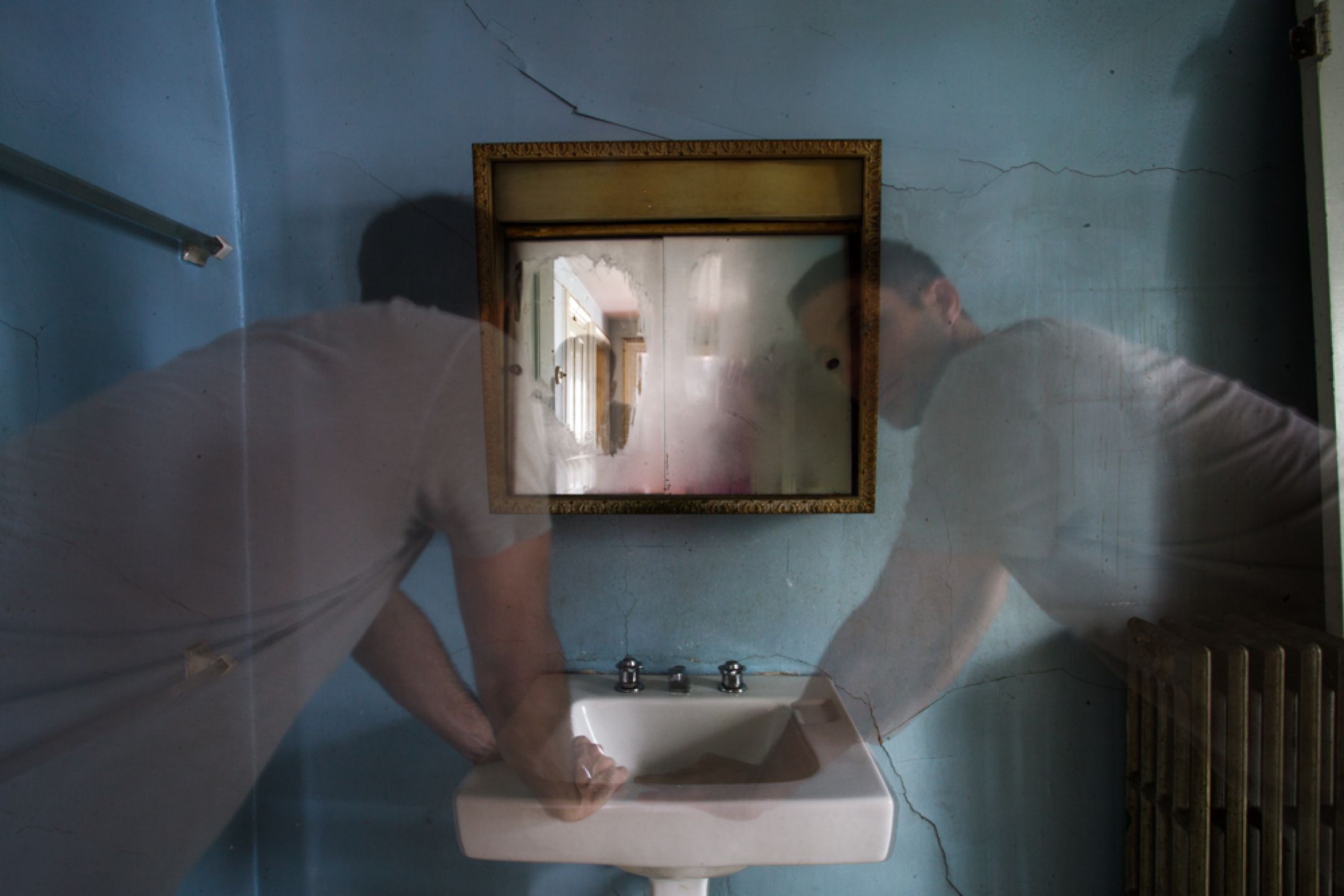
We’ve gotten a really strong response from venturing into a more artistic realm. Doing so has also sparked a dialogue about what’s currently missing from the mental health advocacy space. What gaps exist and how is Made of Millions looking to fill them?
Everybody plays a role. If you’re a traditional nonprofit or advocacy group, in many cases you’re providing local, community support — materials for schools, meet-ups, workshops. There’s a good effort to distribute information and connect in local areas.
If you’re on the other end of the spectrum as an artist, and you’re putting out cool work and taking amazing photographs, that’s important too. But Made of Millions’ role is bridging the gap between those worlds by blending art and advocacy together to better reach younger generations.
Institutions have failed to reach people like me. I spent over 20 years in my head and I never had a single brush up against any of these organizations. None of them. I was never educated on what OCD was. I thought it was about handwashing and germs. I made jokes about having OCD. I mean, there’s tremendous irony there.
The fact that these organizations are failing to use modern design, social media, technology, media tools to reach schools and connect with teens is unacceptable. The main thing that I want to help do, is inspire organizations to invest in branding, design, communication and art because there’s no way people are going to care about advocacy if they don’t have platforms that resonate with them. Something like a beautiful photography series can make people feel seen, and then the next thing you now, they’re signing a petition or showing up to a workshop or reaching out to someone in need. We’re trying to be the inflection point where people read stories, engage with art, debate about mental health and then decide to become advocates for change in their communities.
On the tech side of your argument, what role do new inventions and platforms play? Specifically, in terms of breaking down barriers to treatment and accessing resources that are largely unavailable?
Technology makes the world a lot smaller. That’s a beautiful thing when you have a large portion of the global population suffering without access to basic, accurate information. I think technology first and foremost, should continue to focus on providing education and helping people understand what information is accurate and what’s not — what does treatment for this condition look like, when are you getting bad advice, how do you get involved in a community online so that you can cross-check what the white coats are telling you – which half the time is wrong.
There’s so much misinformation, so much poor professionalism, such a lack of understanding amongst doctors and a lack of availability in resources. And that’s just in the US, let alone on a global scale. Technology will continue to accelerate access to high quality educational information, decrease stigma and normalize the experiences that a lot of people are having. And then five years out, I think teletherapy with real specialists - not just any licensed person – who can provide a personalized and economically practical approach is going to be key.
Have you used tech to supplement your therapy?
Yeah. Online groups are amazing. Even our own group for Intrusive Thoughts. I think a very therapeutic aspect of being in the mental health community is that once you figure a few things out, you can give that knowledge back to others. That’s something that I see a lot of. The community aspect is key. You can’t find that in your neighborhood or after telling your parents. You find it online. Beyond that, I learned how to meditate through apps. For anyone who has intrusive thoughts, the number one thing to double down on is mindfulness meditation. Accepting your thoughts, letting them pass. It’s an absolute game changer. And it’s a free practice.

What would you tell someone who’s stumbled upon our website, wants to do something positive, but doesn’t know where to start?
Look to an area of your life where you have influence. For some people that might be the school system. For others it might be in their own home. For me it’s the workplace. I’m very fortunate that I’ve been able to build a business and a nonprofit. I ask myself: How can I create materials and access to information? How can I work to change the culture of corporate America? And then I try to build those things out. It’s the intersection of my passion, my influence, and where I’m willing to take a risk. And remember that advocacy can be as simple as a discussion, or as big as launching a platform.
Where will we be in the next 10 years given the speed at which this conversation is being adopted by the mainstream?
If we’re successful at normalizing the conversation amongst teens, it’s going to be that generation that brings mental health practices into businesses, schools, government positions, digital culture and beyond. I don’t think in the next five or maybe even 10 years, there’s going to be a massive fundamental shift. This is going to be a highly stigmatized topic for a very long time. In some parts of the world it’s not even safe to have this conversation, so this isn’t a problem that gets solved in my lifetime. But I do think we can make a big dent. The number one way to do that is to normalize it among a much younger audience by making the topic relatable, accessible and a part of everyday culture.
You say there won’t be a fundamental shift. Why’s that?
The more I learn about the mental health landscape, the more I realize what we don’t know. Science does not have a good handle on the brain. As a result, it can be very hard to fully agree with the labels and information that’s thrown at us.
The more we can educate people on the spectrum of experiences, how we currently organize mental disorders and how we treat different conditions, the more people can make decisions that actually make sense for them. There’s not a scientist or a psychologist or psychiatrist on this earth that can tell me right now whether my OCD is truly environmental, whether it’s purely genetic, whether it’s a combination of the two, whether my attention deficit issues are a result of my intrusive thoughts or whether all of it’s due to low serotonin.
No one really knows this. I think there’s value in putting labels on things, sticking them in boxes. It helps things get funding, it helps clinical tests and evidence based trials move forward, and it does slowly advance the concept of psychology and mental health treatment. But it’s important that we recognize that these are best efforts, not sound facts. People need to be in the drivers seat when it comes to their own care. What works for one person doesn’t mean it’s going to work for you.
We have a lot of work to do until the general public, healthcare providers, community organizers and lawmakers have adopted this point of view. Hopefully, in the next 20-30 years we’ll see a more personalized approach to clinical care that makes consideration for a variety of comorbid disorders.
Finally, on a more positive note, what keeps you going and empowered to continue this conversation?
I’m an educated white male living in the United States of America in a safe and loving home, and despite this privilege, I did not have access to any information that would have told me I had OCD. The reality is, it took me going online to learn about something called Pure because OCD has widely been accepted as a disorder focused around physical compulsions, and that’s not what I was experiencing. People organized online around a term and that community taught me about OCD. It was a life saving entry point, and it’s a really beautiful thing.
Everyday the internet is saving lives. And it’s capacity to continue doing so is boundless. That’s what keeps me going.
Are you an artist or advocate?
Send us your stories, ideas and artwork to be considered for site and social content.
Support our work
We’re on a mission to change how the world perceives mental health.
